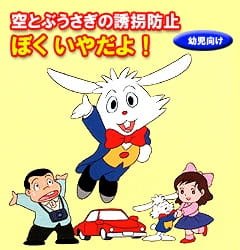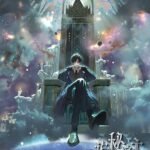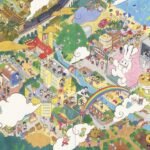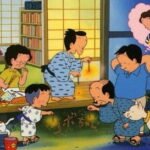Soratobu Usagi no Yuukai Boushi: Boku Iya da yo!
空とぶうさぎの誘拐防止 ぼく いやだよ!
| Genres: Educational, Kids | |
| Themes: Educational | |
| Demographics: Kids | |
| Rank: #14949 | |
| Popularity: #19949 | |
| Users Listed: 325 | |
| Users Scored: 86 | |
| NSFW: No | |
| Last Updated: 12/18/2022 | |
| Aired: May 21, 1990 (Spring) | |
| Type: ova | |
| Age Rating: G | |
| Episodes: 1 |
Synopsis:
This animated work presents a carefully constructed environment exploring themes of trust, observation, and personal safety. The narrative follows a young protagonist navigating everyday situations, subtly introducing concepts related to recognizing potential risks and developing strategies for avoiding harmful encounters. The animation employs a grounded visual style, prioritizing clarity and relatable scenarios over fantastical elements. It emphasizes practical awareness through gentle storytelling, fostering a sense of thoughtful engagement with the characters' experiences. Rather than relying on dramatic conflict, the anime focuses on building understanding and empowering viewers to consider their surroundings and interactions more critically. The overall tone is calm and contemplative, aiming for impactful learning rather than sensationalism.
You May Also Like:
Staff:
- Endou, Katsumi (Director)
- Matsuura, Noriyoshi (Sound Director)
- Nodate, Seiichi (Original Character Design, Original Creator)
- Suzuki, Morishige (Art Director)
Reviews:
-
User Kamezuki (Score: 6/10):
“Soratobu Usagi” is a short anime for preschoolers that features a flying rabbit and his diminutive sidekick using powerful magic to punish would-be kidnappers. It fails in its purpose as an educational anime to prevent child abduction, but it is unintentionally funny. This anime is only about 13 minutes long, but it’s heavily repetitive. Divided into four parts (plus a summary at the end), “Soratobu Usagi” shows children in potential abduction situations. These four parts only have slight variations, and they all essentially play out like this: 1. A kid is minding their own business, playing around outside alone. 2. An adult they don’t know approaches them witha story that would entice the kid to go with them somewhere.n3. The rabbits materialize out of thin air.n4. They get the kid to tell the adult “no,” and then the main one tells the adult, “We’re going to punish you because you tried to do something bad!”n5. The rabbits cause some bizarre punishment to befall the adult (it’s different each time). n6. The kid then runs home to their parents, tells the parents that they told the strange adult “no,” and the parents are happy and praise the kid, seemingly unconcerned that their child almost fell prey to a kidnapper.nnThere are too many things wrong with this to point out all of them, but for starters, is a small child just telling an adult “no” going to get the adult to stop what they’re doing? Why are the parents so unconcerned about their children’s interactions with a potential kidnapper? I understand that the repetitiveness is used to drive the point home that strangers are dangerous, but why show 4 situations with only slight variations? Also, the anime makes it seem like the only potentially dangerous adults are the ones they don’t know, and that relatives and teachers, etc., are all to be trusted, which doesn’t seem right.nnMoreover, the rabbits aren’t from an existing franchise or anything like that; they were made specifically for this one anime, and they don’t appear anywhere else. Why rabbits? Why do they fly? How do they possess such powerful magic? And what’s the point of the small one, who hardly does anything? There are a few interstitial scenes of the rabbits playing around, like balancing on a giant ball or walking in the rain, which also don’t make much sense. It’s like the creators thought they had to stick some “fun” scenes throughout to keep the kids interested, but the scenes are presented without any context whatsoever.nnThe animation itself is not bad, considering what this is. The art is a bit odd at times, though — for example, it seems that most of these kids live in gigantic mansions (by Japanese standards). The voices are decent. The credits only list the actors and not the roles they play, by the way, so I’m not sure who voices whom. The music is standard, but the instrumental ending theme has a Christmasy feel to it for some reason.nnAlthough it’s…

























